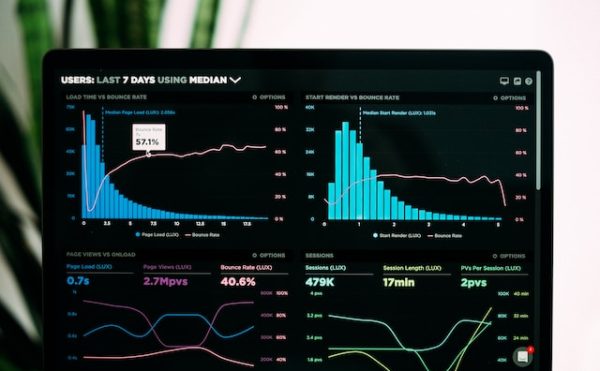The world we live in today has grown rapidly and it has touched the complexity of big data. In the ever-developing world of technology, it is important to be able to utilize big data. Skilled developers and data analysts should know how to secure big data and uncover useful business insights in the process.
Big Data Definition
Big data comes in many types of structured and unstructured data. Structured data can come in the shape of rows and columns with numbers, dates, etc. Whereas examples of unstructured data are PDF files, social media data, images, etc.
The benefit of analyzing this big data can reveal hidden insights to help improve your business, such as new business processes, innovation, or market trends. So, how to secure big data is an essential question to ask to save financial losses and even reputational damage.
How to Secure Big Data
Big data security refers to any measure to ensure data safety when storing, processing, and analyzing data sets that are so big and complex to be handled by traditional database applications. This measure focused on preventing any malicious activity on the data.
There are three stages to securing big data, including:
- Transit data from source locations for storage
- Layer protection of data in the storage, and
- Output data, such as reports or analytics using a different engine
As for the protection to prevent threats such as:
- Distributed Denial of Service (DDoS) attacks
- Improper access controls
- False or malicious data
- Vulnerabilities in libraries
- Applications used during big data workloads
Furthermore, securing big data involves several important steps:
1. Data Encryption
Encrypting data both at rest and in transit to protect them from unauthorized access. By encrypting sensitive data, even if some files get stolen, well-implemented encryption makes the data unreadable.
Scalable encryption data is also important to encrypt data across analytics toolsets and their output in addition to storage formats like NoSQL.
2. Access Control
You need to implement strong access control to limit who can access, modify, or delete data. This can also reduce insider threats and excess privileges.
For example, giving access control by role: a data analyst should have access to analytics tools, but shouldn’t get access to developer tools. Restricting access to only the necessary tools to the necessary person can prevent any malicious intent.
3. Network Security
Involves network segmentation which is dividing your big data infrastructure into separate segments with firewalls to control data flow and reduce attacks. Also, add network traffic analysis, and use tools to analyze the traffic of data and user behavior.
4. Data Masking and Anonymization
The main objective is to maintain data privacy and security while allowing the use of realistic but fictional data for development, testing, or analytics purposes. This involves replacing, encrypting, or scrambling sensitive information in the database.
In anonymization, the goal is to detach any personal information from the data. So, the data can be used for research, analytics, or any other purposes. This includes generalization, suppression, or noise addition. Both of these techniques protect against unauthorized access and minimize data breaches for analytics and sharing.
5. Data Backup
One of the most known ways to answer how to secure big data is data backup. It involves regularly creating copies of important data and storing it in separate locations. Backing up data also enables restoration in case of accidental deletion, hardware failure, or malicious activities.
There are 3 types of data backup, namely:
- Full backup includes a full copy of all your data
- Incremental backup is backing up data that changed since the last backup
- Differential backup is to backup changed data since the last full backup
If possible, store backup copies in a separate physical location to protect against site-wide disasters. Don’t forget to automate the backup process.
6. Disaster Recovery
Disaster recovery refers to the processes and procedures to restore data and critical IT systems after a disaster or disruptive event. Implementing disaster recovery can ensure your business continuity as soon as possible after a disaster, and recover data without loss or corruption.
There are 3 components of disaster recovery, such as:
- Disaster Recovery Plan (DRP) – a documented strategy outlining the steps and procedures to recover data and IT systems.
- Recovery Time Objective (RTO) – the targeted duration for the recovery plan to be restored
- Recovery Point Objective (RPO) – the maximum data loss, indicating the time interval between the last data backup and the disaster
Do regular testing to identify and address any potential issues or shortcomings.
7. Regular Updates and Patches
One of the most important steps to secure big data is to regularly update the data platforms or software and patches. These updates usually improve the existing features or add new ones. In addition, updates usually include:
- Bug fixes
- Vulnerability fixes
- Improved security features
- Compatibility
- Compliance requirements
8. User Behavior Analytics
One step deeper after limiting accessibility, user behavior analytics gives you a baseline of the users. By implementing user behavior analytics, you can better prevent insider threats and compromised user accounts. In the case of deviations from the baselines, this toolset can monitor and notify you.
Concerns Surrounding How to Secure Big Data
Outside of the process to secure big data itself, there are still some concerns surrounding it. Here are something you must know.
1. Compliance and Regulations
After learning how to secure big data, the process you take should reflect the adherence of the organization to specific laws, rules, and standards that govern the operations. These regulations are put in place to ensure ethical practices, protect consumers, safeguard data privacy, and maintain fair competition.
Here are some key areas of compliance and regulations:
- Data Protection and Privacy
- Financial Regulations
- Health and Safety Regulations
- Anti-Money Laundering (AML)
- Know Your Customer (KYC)
- Intellectual Property and Copyright
2. Employee Training
Make sure that your employee understands compliance and regulations, security policies, procedures, and guidelines. By providing comprehensive training, you can create a safe environment, and reduce risks of data breaches, and human error.
Don’t forget to do regular employee training to refresh or renew some guidelines evolving with updates by your choice of big data platforms. Thus, every role regarding your big data should know how to secure big data.
That is How to Secure Big Data
Remember that securing big data is always improving. A newer version of the service exceeds the last, updates require upgrades of employees’ knowledge. Also, keep in mind the regulations. So, ensure you update the secure and your information will not leak to others.
Bagikan










